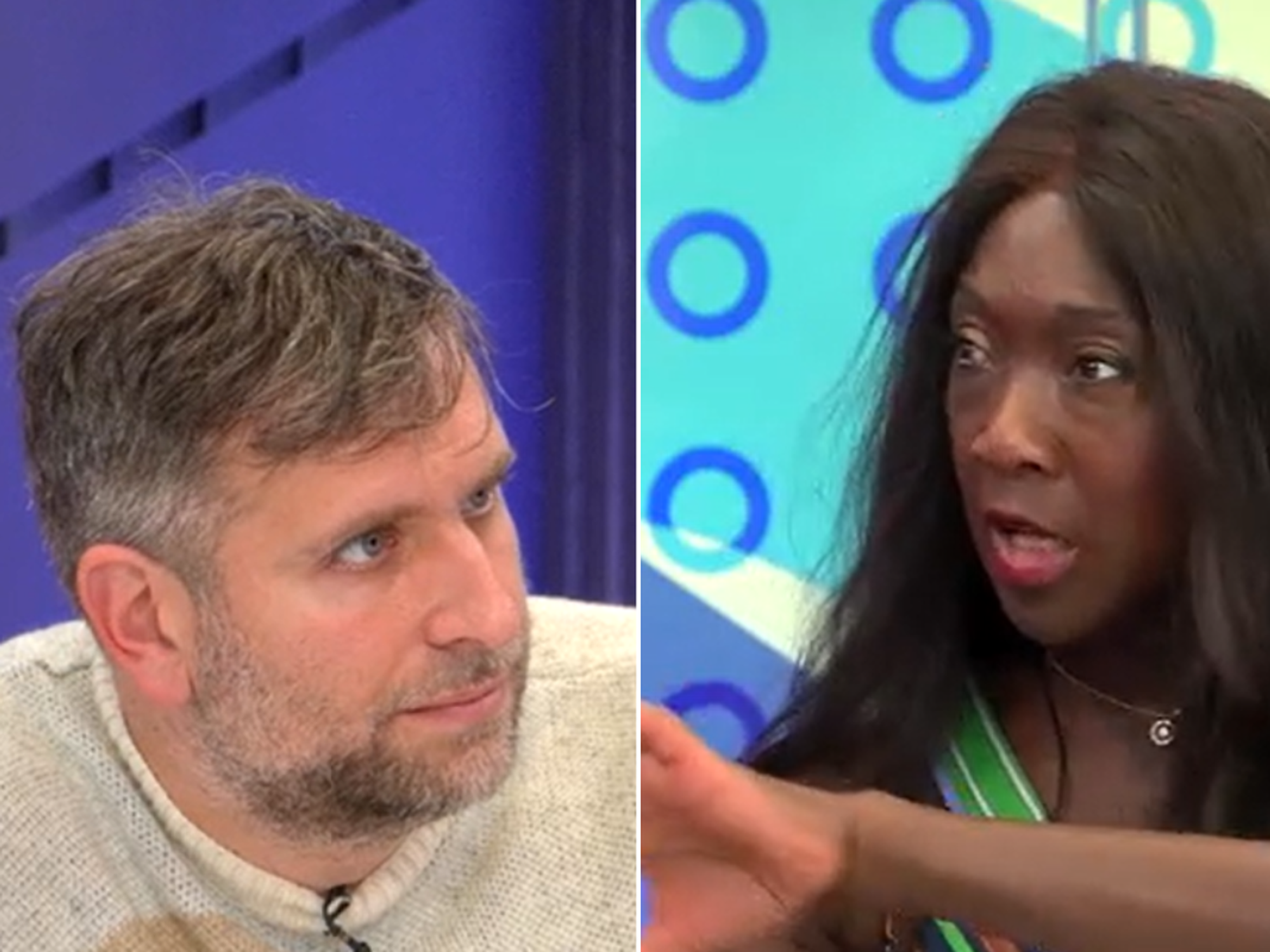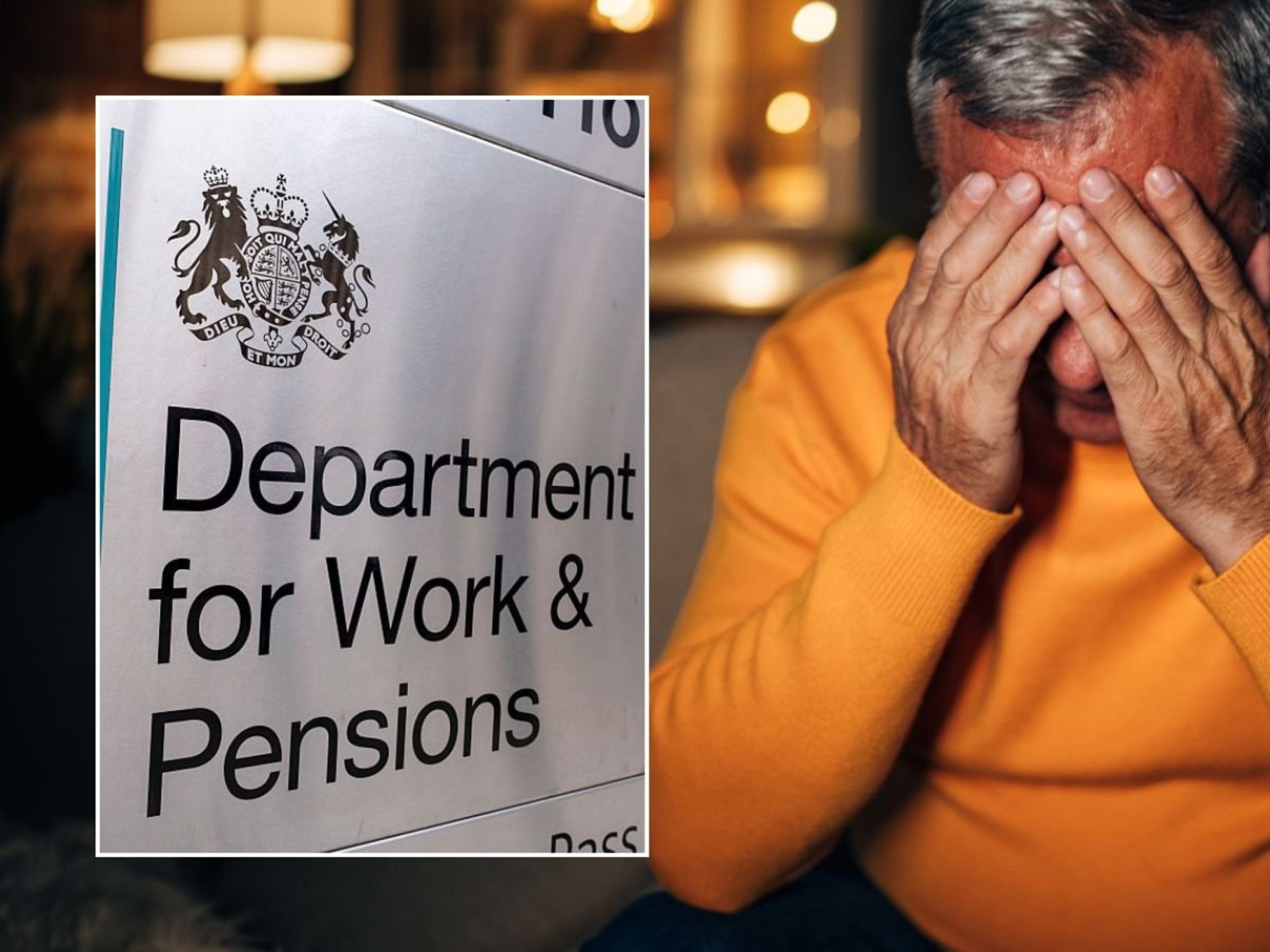Microsoft is making a fundamental change to Windows after 40 years, and you'll hopefully never see it
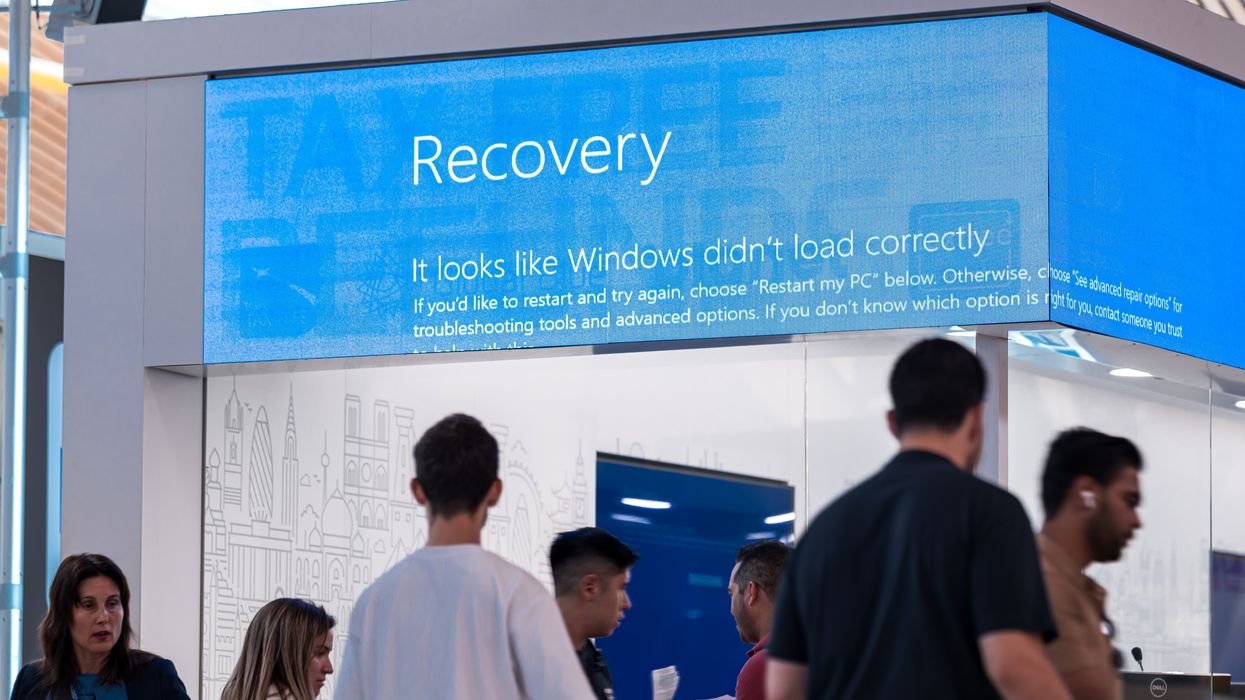
During the global CrowdStrike outage last year, millions of people came face-to-face with the Blue Screen of Death as airlines, railways stations, supermarkets, and more descended into chaos as IT systems failed
|GETTY IMAGES

The infamous Blue Screen of Death will be ditched in Windows 11's next update
- Microsoft has redesigned the Blue Screen of Death, BSOD
- This critical error message has plagued millions of PC users since the 80s
- Microsoft had attempted to shake-up the warning screen four years ago
- But it was the chaotic CrowdStrike outage that spurred the US firm into action
- As well as a new simplified look, the reboot process is much faster
- Desktop PC and laptop owners should be back up-and-running in seconds
Don't Miss
Most Read
Microsoft is making a monumental change to Windows — and you'll have everything crossed that you never see it.
The Redmond-based company has confirmed plans to retire its infamous Blue Screen of Death, often referred to as BSOD, after four decades. If you've relied on Windows for years, you'll know this dreaded error message only appears when the desktop operating system has encountered a critical system error that it cannot recover from.
If you see the Blue Screen of Death, which gets its name from the trademark blue background, you'll be aware that your laptop or desktop PC is about to reboot — and you could be about to lose unsaved work.
While it might seem like a relatively obscure system error, the Blue Screen of Death has transitioned into the mainstream, with hit shows like The IT Crowd, Mr. Robot, and The Simpsons nodding to the BSOD. Not only that, but screensavers and fake BSOD apps to prank friends and colleagues are commonplace in offices and schools.
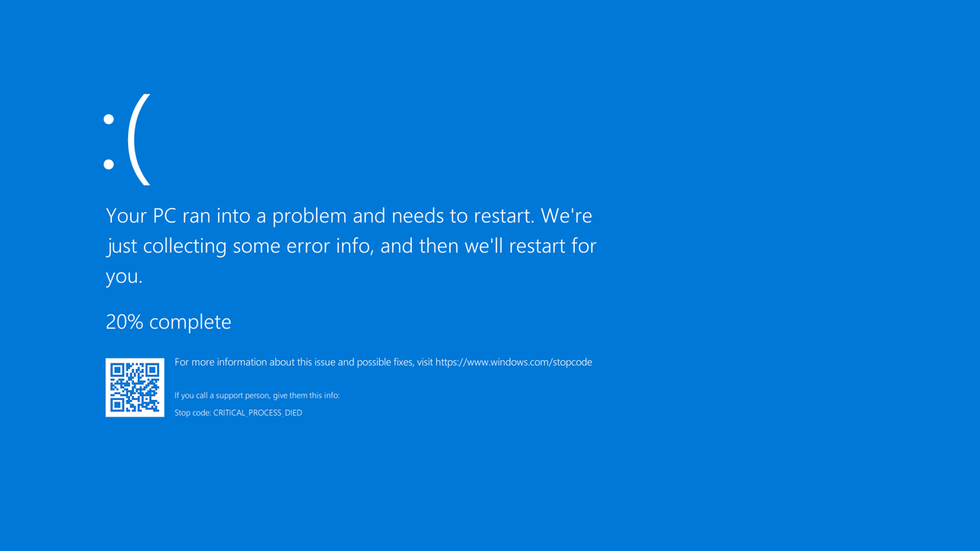
Blue Screen of Death, or BSOD, is a well-known error screen that appears when your Windows laptop or desktop PC is unable to load the operating system
| MICROSOFTIntroduced in 1985, Microsoft has changed the messaging that appears on the infamous error message in the decades since it debuted the Blue Screen of Death, but the iconic colour has remained consistent.
But that's all about to change.
Microsoft has confirmed the successor to the Blue Screen of Death will be (imaginatively) named the Black Screen of Death. As you'd expect, new design ditches the traditional blue background colour. Microsoft has also removed the frowning face and QR code for more information.
In its place, the Black Screen of Death has a much simplified design that's much closer to what Windows users will be accustomed to seeing when performing a system update. The new critical fault screen will list the error message or the faulty system driver, so you can seek out more information on what's gone wrong.
"Your device ran into a problem and needs to restart," the new error message reads.
Microsoft has worked hard to ensure that devices will reboot much faster with this new system. Restart times have been reduced to "about two seconds for most users" when your Windows devices run into the type of critical fault that causes the Black Screen of Death to surface.
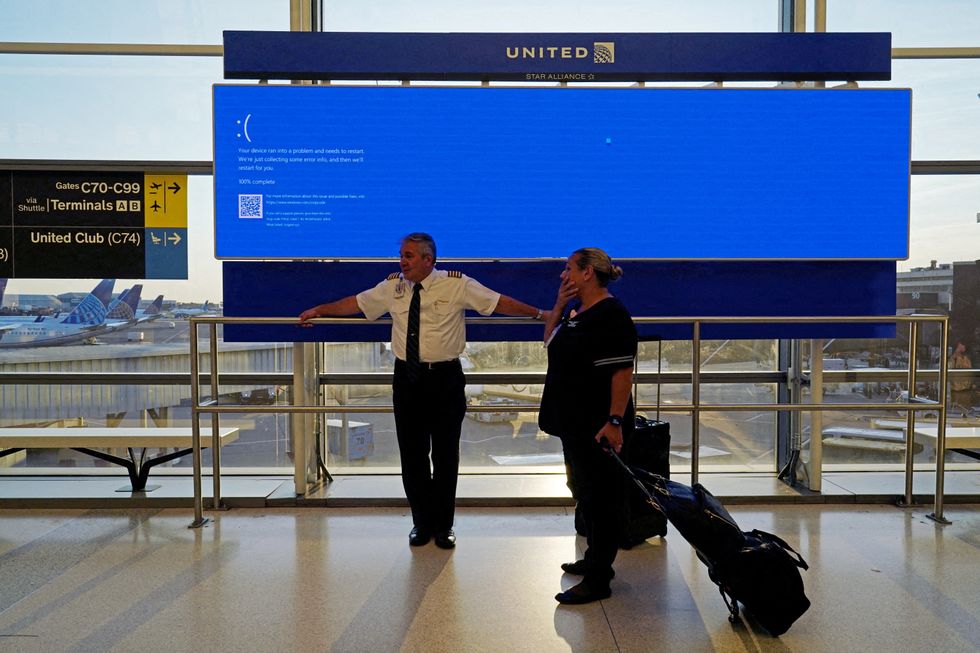 The Blue Screen of Death, a colloquial name for the error message that appears when a Windows 10 or Windows 11 machine fails to boot-up properly, was spotted around the world after the CrowdStrike issue |
The Blue Screen of Death, a colloquial name for the error message that appears when a Windows 10 or Windows 11 machine fails to boot-up properly, was spotted around the world after the CrowdStrike issue | REUTERS
Microsoft Vice President of Enterprise and OS Security, David Weston, told The Verge: "This is really an attempt on clarity and providing better information and allowing us and customers to really get to what the core of the issue is so we can fix it faster. Part of it is just cleaner information on what exactly went wrong, where it’s Windows versus a component."
While Microsoft experimented with shaking-up its dreaded Blue Screen of Death back in 2021 (a redesign that was abandoned during early beta tests with Windows Insiders...) it was the worldwide CrowdStrike outage last year that forced the US company to readdress its error message.
The massive outage affected everything from airlines to ATMs, supermarkets to railways stations, with the trademark Blue Screen of Death visible to millions. In response, Microsoft started work on reducing restart times whenever your system encounters an unexpected error and displays the BSOD.
According to Microsoft, its reworked screen offers a "simplified user interface" that "improves readability and aligns better with Windows 11 design principles, while preserving the technical information on the screen for when it is needed." It's also much speedier at rebooting and getting you back into whatever you were doing when the fault hit.
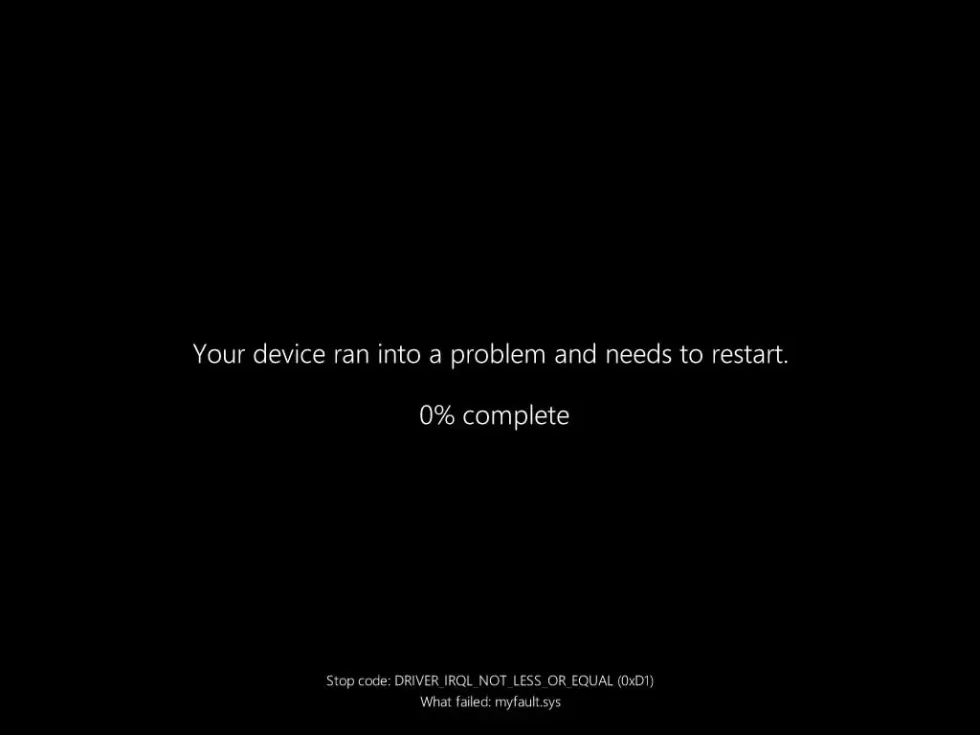
Microsoft has offered an early glimpse at the simplified Black Screen of Death, which reduces reboot times and removes the frowning face, QR, and trademark blue background colour
|MICROSOFT | THE VERGE
According to the Redmond firm, the brand-new Windows 11 restart screen will start to roll-out later this summer on all Windows 11, version 24H2 devices. The shake-up is part of a broader Windows Resiliency Initiative, designed to "embed resilience and security" directly into Windows platforms. Microsoft's Quick Machine Recovery feature will accompany the new screen, allowing the company to target issues without manual intervention.
The redesigned interface maintains essential technical information whilst streamlining the user experience.
LATEST DEVELOPMENTS
A Brief Timeline of the Blue Screen of Death
1985 | The Birth of a Blue Legend
The BSOD first appeared in Windows 1.0, but it wasn’t yet the nightmare fuel we know today. These early crashes were more cryptic DOS-style error messages, but the seeds were sown.
1993 | Windows NT and the Official ‘Blue’ Era Begins
Windows NT was the first to introduce the BSOD in its now-iconic blue background. It showed white text on a blue screen, delivering fatal system errors in terrifying hexadecimal. It became a key part of the Windows crash experience — cold, blunt, and brutally informative.
1995 | Windows 95 and the Pop Culture Panic
The BSOD hit the mainstream during the launch of Windows 95, when it made a now-legendary appearance live on stage as Bill Gates demoed a plug-and-play printer. Cue global headlines. Suddenly, the BSOD was more than a system crash — it was a meme in the making.
2001 | Windows XP: Polish Meets Panic
Windows XP brought a sleeker look to Windows overall — but not the BSOD. It remained as stark and terrifying as ever. This era cemented the BSOD’s cultural icon status: t-shirts, mugs, April Fool’s pranks, and IT jokes exploded in popularity. It even featured in video games and TV shows.
2012 | Windows 8: A Softer Blue
In a surprising twist, Microsoft gave the BSOD a smiley face 😢 in Windows 8 — part of a broader effort to humanise crashes. It also added a QR code for easier troubleshooting, and the technical info was slimmed down. A small step toward user-friendliness, but diehards missed the classic hex codes.
2016 | Windows 10 Anniversary Update: QR Codes for All
The QR code became a standard BSOD feature, letting users scan the screen with their phone for quick access to Microsoft support pages. It was a step toward making the BSOD less of a black box, though it didn’t stop the jokes.
2021 | Windows 11 Preview: Black Screen of Death
Microsoft briefly changed the BSOD to black in the first builds of Windows 11, sparking huge online debates. It didn’t last long — Microsoft reverted it back to blue later that year after community backlash. The blue screen had become too iconic to kill.
More From GB News






